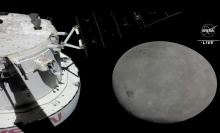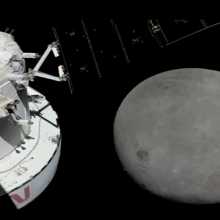After four years of incredible research on the red planet, NASA's landmark InSight lander mission is officially over.
Following a final photo post (and the world's saddest tweet) from the lander on Monday, the space agency officially announced the end of the InSight mission on Thursday, after the spacecraft's solar batteries reportedly finally lost power. It's been four glorious years on Mars for the defiant lander, which touched down on the planet's surface in November 2018.
"NASA's InSight mission has ended after more than four years of collecting unique science on Mars," reads NASA's press release. According to the space agency, staff at California's Jet Propulsion Laboratory (JPL) "were unable to contact the lander after two consecutive attempts, leading them to conclude the spacecraft's solar-powered batteries have run out of energy." This, NASA said, is the state known as "dead bus."
Tweet may have been deleted (opens in a new tab)
Akin to the fate of other NASA robots, Martian dust has been whittling down the power of NASA's InSight lander by covering its solar panels in a thick layer of sediment. In May 2022, NASA announced the lander's mission would be done by summer 2022 — though it defied all odds, still chugging along in October.
Tweet may have been deleted (opens in a new tab)
According to the space agency, the last time the InSight lander reported back to Earth was Dec. 15, and "NASA had previously decided to declare the mission over if the lander missed two communication attempts."
NASA will continue to monitor InSight for signs of communication, but described this possibility as "unlikely."
Tweet may have been deleted (opens in a new tab)
Since launching from Earth on an Atlas V rocket in May 2018, then plummeting through the perilous Martian atmosphere and touching down at 2:52 p.m. ET on Nov. 26, 2018, InSight (short for Interior Exploration using Seismic Investigations, Geodesy, and Heat Transport) has been delving into the inner workings of Mars, helping scientists to map the planet's geology and interior as "the first outer space robotic explorer to study in depth the 'inner space' of Mars: its crust, mantle, and core."
From the plains of Mars' Elysium Planitia, the lander sent daily weather reports, discovered the planet's molten core, measured tectonic activity and seismology (including over 1,300 Martian quakes or "marsquakes" and the strongest temblor ever recorded on another planet), and examined the impact of meteorites on Mars' surface. Plus, Martian ice!
InSight has also beamed back more than a few photos of the planet, including its first dusty photo on landing day — the next day's pic was much clearer.
Tweet may have been deleted (opens in a new tab)
It wasn't all smooth sailing, of course. InSight ran into some issues with its "mole" digger designed to drill 16 feet into the Martian surface to take its temperature. Yes, it got stuck, but was unstuck and back to work until finally the digger was declared officially dead in Jan. 2021.
Suffice to say, it's been a busy four years for InSight and its research team, NASA’s Science Mission Directorate managed by JPL.
"InSight has more than lived up to its name. As a scientist who's spent a career studying Mars, it's been a thrill to see what the lander has achieved, thanks to an entire team of people across the globe who helped make this mission a success," said JPL director Laurie Leshin in a press statement. "Yes, it's sad to say goodbye, but InSight's legacy will live on, informing and inspiring."
"We've thought of InSight as our friend and colleague on Mars for the past four years, so it's hard to say goodbye," added Bruce Banerdt, InSight's principal investigator with JPL. "But it has earned its richly deserved retirement."
Thomas Zurbuchen, associate administrator of NASA's Science Mission Directorate in Washington, said in a press statement the end of the mission was both sad and celebratory. "I watched the launch and landing of this mission, and while saying goodbye to a spacecraft is always sad, the fascinating science InSight conducted is cause for celebration," he said. "The seismic data alone from this Discovery Program mission offers tremendous insights not just into Mars but other rocky bodies, including Earth."
Perseverance and Curiosity, it's up to you now.





























